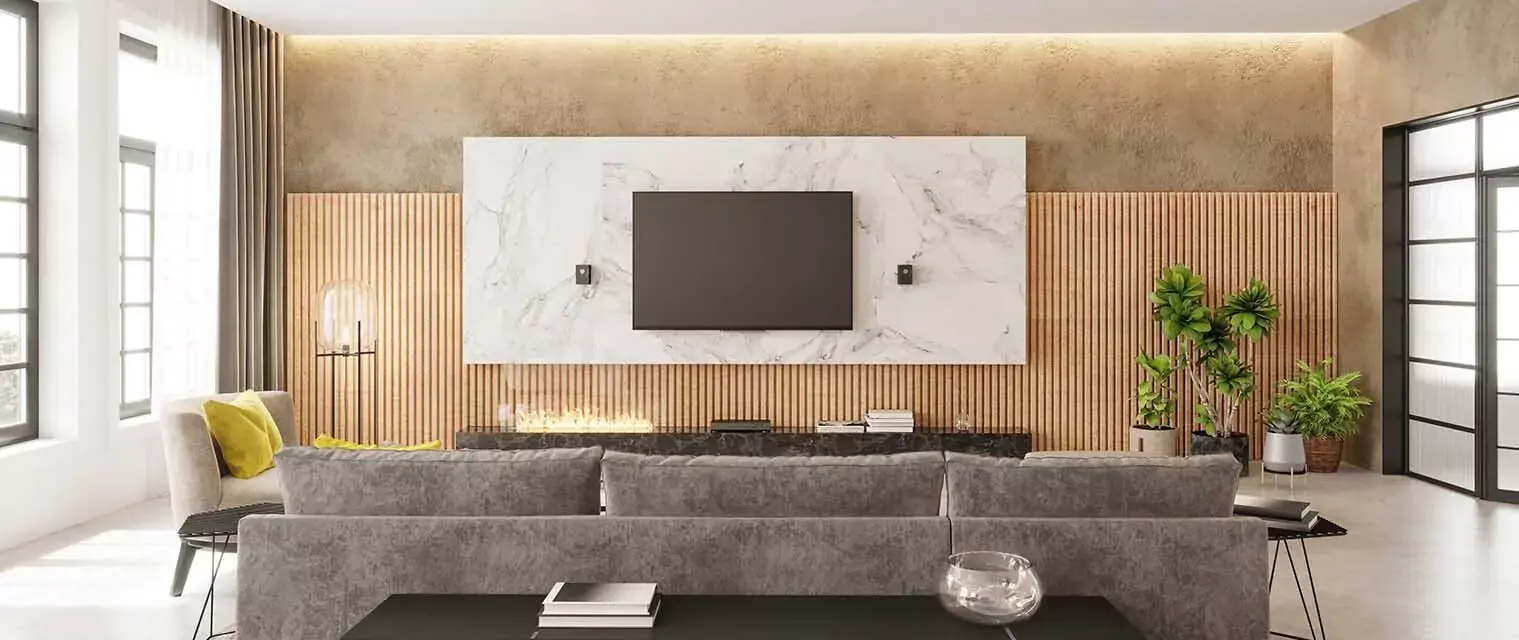An Overview of Home Interior Painting
Interior painting involves applying paint to the walls, ceilings, and other surfaces inside a home to enhance its aesthetics and protect the surfaces. Home painting services offer professional assistance, including color consultation, surface preparation, and precise application techniques. The cost of interior painting varies based on factors like the size of the area, type of paint, and surface condition. Homeowners can find interior painting companies near them through online searches or referrals. Professional interior painters near you offer expertise, quality craftsmanship, and efficient service to achieve desired results. Investing in interior home painting not only refreshes the look of the space but also adds value and longevity to the surfaces, making it a worthwhile endeavor for homeowners seeking to enhance their living environment.
10 Things To Consider Before Home Interior Painting
Surface Preparation:

According to our interior designers in coimbatore, ensure surfaces are clean, smooth, and free of any dirt, dust, or grease before painting. Proper preparation ensures better paint adhesion and a smoother finish.
Type of Paint:

Choose the appropriate type of paint based on the surface being painted (e.g., latex for walls, oil-based for trim), as well as considerations like durability and finish.
Colour Selection:

Select colours that complement your existing decor, lighting, and personal preferences. Consider factors like natural light, room size, and the mood you want to create.
Quality of Paint:
According to our interior designers in Hyderabad, invest in high-quality paint to achieve better coverage, durability, and long-lasting results. Quality paints also tend to have better color retention and resistance to fading and stains.
Primer:

Determine if the primer is needed based on the condition of the surface and the type of paint being used. Primer helps improve paint adhesion, coverage, and durability.
Test Colours:
Always test paint colours on a small area of the wall or surface to see how they look in different lighting conditions before committing to the entire space.
Surface Repairs:

Address any surface imperfections like cracks, holes, or peeling paint before painting. Repairing these issues ensures a smoother finish and prevents them from worsening over time.
Temperature and Humidity:
Paint in optimal temperature and humidity conditions as specified by the paint manufacturer. Extreme temperatures or high humidity can affect paint the duration it takes for it to dry.
Wear Protective Gear:
According to our interior decorators in Noida, wear appropriate protective gear such as goggles, gloves, and a mask to protect yourself from paint fumes, splatters, and other hazards.
Furniture Protection:
Cover or move furniture and belongings away from the painting area to prevent damage or staining. Use old cloths or plastic sheets to protect the floors and surfaces from stains.
Benefits of Home Interior Painting
Protection for Surfaces:
Painting your home's interior surfaces provides a layer of protection against wear and tear, moisture, and other environmental factors. Quality paint acts as a barrier, helping to shield walls and ceilings from damage caused by dust, dirt, stains, and minor impacts. Additionally, certain types of paint contain additives that offer resistance to mold, mildew, and bacteria, further protecting your home's interior surfaces and promoting a healthier indoor environment.
Easier Maintenance and Cleaning:
Freshly painted walls are easier to clean and maintain than dirty or outdated surfaces. Quality paint finishes, such as satin or semi-gloss, provide a smooth, washable surface that can be easily wiped clean with a damp cloth or sponge, making it simple to remove dust, dirt, and stains. This makes routine maintenance and upkeep of your home's interior surfaces more manageable and less time-consuming.
Personalization and Expression:
Painting your home's interior allows you to personalize your living space and express your unique style and personality. Whether you prefer modern, minimalist design or cozy, traditional decor, the colours and finishes you choose for your walls and ceilings can reflect your tastes and preferences. Painting also provides an opportunity to experiment with different colour schemes, textures, and design techniques to create a home that feels uniquely yours.
Why Choose Decorpot?
Choose Decorpot for expert interior design services tailored to your unique style and preferences. With a focus on quality craftsmanship, innovative designs, and client satisfaction, Decorpot delivers exceptional results for every project. Our team of skilled professionals provides personalized solutions, ensuring your home reflects your personality and lifestyle. From concept to completion, trust Decorpot to transform your space into a stunning and functional masterpiece that exceeds your expectations.
FAQ's
Q1. Which colour is best for the inner house?
The best colour for the interior of a house depends on factors like personal preference, room size, lighting and existing decor. Neutral tones like gray, beige or blue are versatile and timeless, creating a calming and inviting atmosphere. However, bold colours like blues, green, or yellows can add personality and drama to a space when used strategically as accents or focal points. Ultimately, choose a colour that reflects your style and complements your home's aesthetic while considering how it will interact with other elements in the room.
Q2. What is the best way to paint inside a house?
The best way to paint inside a house involves thorough surface preparation, including cleaning, patching, and priming as needed. Use high-quality paint and tools, apply paint evenly with rollers or brushes, and work in small sections for a consistent finish. Proper ventilation and protective gear are essential, and allow sufficient drying time between coats for optimal results.
Q3. Which 2 colour combination is best?
One of the best color combinations is blue and white. Blue brings a sense of calm and tranquility, while white adds brightness and freshness. This classic duo works well in any room, creating a timeless and elegant look that's both versatile and soothing. Whether used in varying shades or as contrasting accents, blue and white evoke a sense of serenity and sophistication in any space.






.png)

.png)



 2026 | All Rights Reserved
2026 | All Rights Reserved